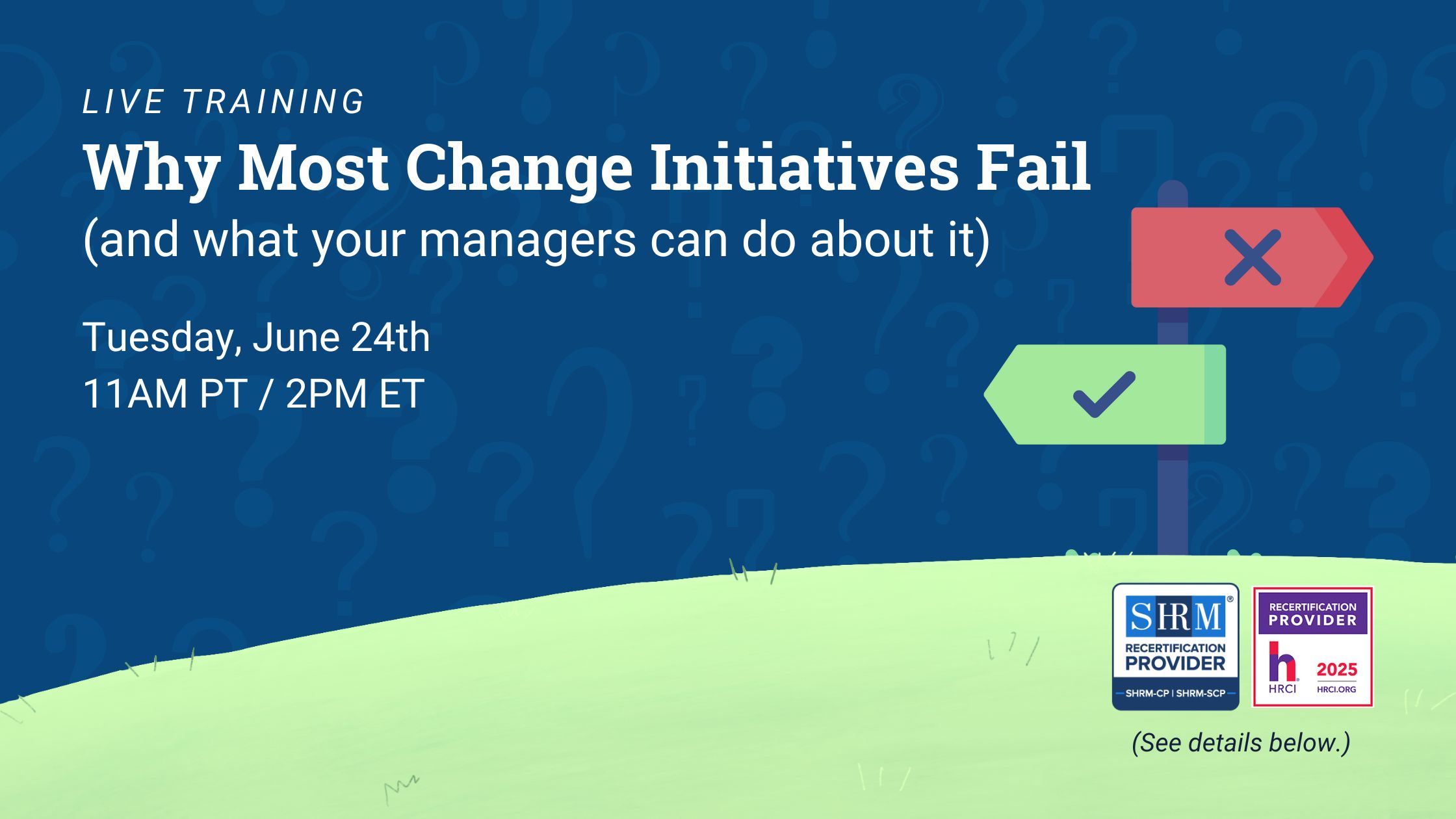The root of every successful business is its people and the knowledge they bring to the table. Leaders and managers who become coaches for their teams help them grow, adding value to the organization and empowering employees to step into their career potential.
While managing centers around directing employees in their responsibilities, coaching brings out the best in them, enhances the employee experience, and connects workers to the company mission while providing a better understanding of how their efforts contribute to their teams’ success. Coaching is valuable at every stage of the employee lifecycle, helping to improve performance and engagement and reduce employee turnover.
Below, we offer 12 effective coaching strategies for leaders to apply to elevate their team members to greater heights.
12 Coaching Strategies for Managers and Leaders
1. Set goals for employees that inspire and motivate
When a manager involves employees in the goal-setting process by allowing them to contribute their insights and perspectives, it fosters a sense of ownership and commitment to the goals. Aligning the goals with the team members’ strengths, interests, and career aspirations helps them feel valued and recognized for their unique contributions. By providing clear and specific guidelines on how to achieve the goals, along with necessary resources and support, employees feel empowered and motivated to achieve.
2. Ask the right questions
Ask questions that help you to more clearly understand your employees, and inspire them to think more critically. By asking judgment-free questions that get to the heart of the situation, you can facilitate employees to come up with solutions. Consider using open-ended questions that clarify, beginning with “What” or “How,” and ask for more context with questions beginning with “When,” “Where,” or “Who.” Often asking these types of questions will help the employee discover their own answers, which coaches them to become more independent and autonomous.
3. Be an active listener
Once you ask the right questions, it’s important to truly listen to employees’ answers, by paying attention to their words, facial expressions, and body language. Maintain eye contact, paraphrase what they’ve said to ensure comprehension, and resist interrupting or offering solutions. Try to get the full picture of what is contributing to the problem or question and understand the employee’s perspective. Only when you are clear on the situation should you help the employee come up with solutions by once again asking the right probing questions.
4. Recognize employee strengths and latent talent
Understanding an employee’s strengths helps to identify areas where they can develop or improve. Assessments, such as Gallup’s CliftonStrengths, can uncover traits that can be maximized to bring the greatest impact to the way your team members work, both independently and with one another. Recognize talent in your employees and provide avenues to enhance skills or access to additional training.
5. Create personalized development plans
Visualizing potential career paths makes it easy for employees to envision their future within the organization. Get to know your team members’ aspirations and use those learnings to create a path for growth. This can include skill development, participation in cross-departmental projects, and mentorship opportunities. By creating a plan for employees’ development within the company, you will motivate them to succeed and increase their loyalty.
6. Celebrate successes
Celebrate individual and team milestones and wins on a one-on-one, team, and company-wide basis. Managers can (and should) express gratitude or congratulations directly. It’s also important to let team members and the wider workforce know about the achievements, as doing so can inspire others while further motivating those being celebrated. This can be accomplished by posting on the company intranet, announcing at an all-staff meeting, or including the accomplishment in the employee newsletter.

7. Encourage employees to contribute ideas
When employees’ ideas are considered and contributions appreciated, team members are much more likely to be engaged and productive. Facilitate this participation by maintaining an open line of communication, asking for feedback, and being open-minded about employees’ ideas and solutions. Even when an idea isn’t possible, be clear when explaining why, and encourage them to keep bringing their ideas to you. If an employee needs support to accomplish an idea, guide them toward the resources needed.
8. Get to know your employees
Individuals bring their whole selves to work. When you understand what motivates them, their strengths, weaknesses, and the situations they avoid, you’ll be better able to drive improvement by addressing the whole human. Begin one-on-one sessions with conversations that delve into their interests and life outside of work. Use team bonding exercises or outings to strengthen relationships. Share with them to encourage an open line of communication that enables you to learn more about your team members.
9. Demonstrate empathy
A little compassion goes a long way. When you seek to understand what your employees are going through, whether at work or in their personal lives, they’ll know you care about their welfare. Because being empathetic requires listening, you will help your employees feel heard, which builds trust and strengthens morale. When employees know they can count on you, they will be more likely to come to you when they have issues instead of allowing stress to overwhelm them and impact their work.
10. Enable continuous learning
Encourage upskilling and skills enhancement as part of a culture of continuous learning. Offer micro-learning modules, online courses employees can self-enroll in, and periodic training programs or certifications. Incentivize learning by providing information on potential career paths to help employees visualize where their new knowledge can take them.
11. Give employees dedicated time for skills enhancement
Offering employees resources for learning without the time to take advantage of them will result in a lack of participation. Show that their development matters to you and the organization by working with them to prioritize their time. Allow time during the week to dedicate to skill growth and other career development programming. Both your team and the individuals will benefit as a result.
12. Have regular check-ins
When you meet with employees only occasionally, it can be difficult to learn about their achievements and challenges and to help them improve and grow. Have regular check-ins and one on one meetings with team members to discuss their work and progress on goals and address problems by offering support. Offering timely feedback empowers employees to quickly make positive changes. Frequent meetings focusing on the individual employee help them feel valued.
Set Your Employees Up for Success with Proven Coaching Strategies
Use the strategies in this article to develop and nurture your employees for their own benefit as well as for your business as a whole.
If you’re looking for ways to develop your employees, managers, and leaders, INTOO offers a variety of programming, including training, workshops, and career coaching suitable for every member of your organization. Contact us today to learn more.
Robyn Kern is a seasoned business writer who has written in the HR, education, technology, and nonprofit spaces. She writes about topics including outplacement, layoffs, career development, internal mobility, candidate experience, succession planning, talent acquisition, and more, with the goal of surfacing workforce trends and educating the HR community on these key topics. Her work has been featured on hrforhr.org and trainingindustry.com.











